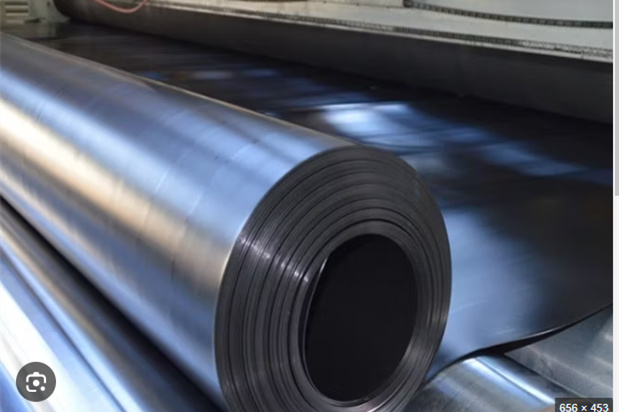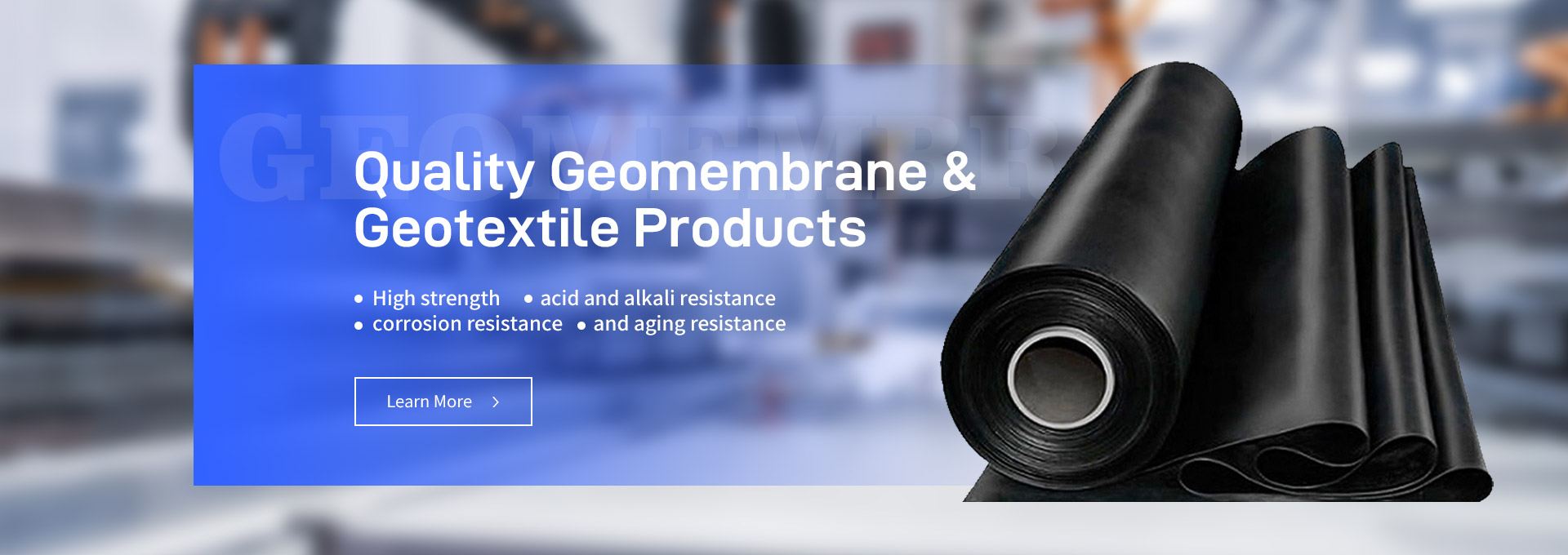In geotechnical engineering, geomembrane is a crucial material widely used for applications like landfill liners, water reservoirs, underground waterproofing, and dam reinforcement. Its excellent impermeability and durability make it indispensable. However, when purchasing and using geomembranes, thickness plays a vital role in determining performance. Thickness directly affects the geomembrane's properties, such as impermeability, durability, and ease of installation. So, how do you choose the right thickness? Let’s discuss how thickness influences performance and provide practical tips to help you make the best choice.

What is a Geomembrane?
A geomembrane is a thin sheet made from high-density polyethylene (HDPE) or linear low-density polyethylene (LLDPE). It is designed for exceptional impermeability and chemical resistance. Geomembranes are classified by their thickness, material, and functionality, and their uses include:
Thin Geomembranes (0.2mm-0.5mm): Suitable for low-pressure applications, such as temporary lining.
Medium-Thick Geomembranes (0.75mm-1.5mm): Ideal for projects like landfills or water reservoirs requiring moderate to high impermeability.
Thick Geomembranes (1.5mm and above): Used in high-demand applications like nuclear power plants or deep-sea aquaculture.
The performance of geomembranes varies significantly with thickness, making it essential to understand how thickness impacts their effectiveness.
How Thickness Affects Geomembrane Performance
1. Impermeability
Thickness is a key determinant of a geomembrane's impermeability. Thicker geomembranes offer better resistance to liquid seepage due to their higher material density. For example:
Geomembranes with a thickness of 1.5mm or more are commonly used in landfills or water reservoirs where long-term impermeability is crucial.
Thinner geomembranes, such as those around 0.5mm, work well for temporary or less critical projects like short-term water storage.
For high-risk, long-term applications like hazardous waste containment, thicker geomembranes ensure superior reliability.
2. Mechanical Strength
During installation and use, geomembranes experience mechanical stress, including tension, tearing, and puncture risks. Thickness enhances the material's ability to withstand such stresses:
Tensile Strength: Thicker geomembranes can better handle stretching forces without breaking.
Puncture Resistance: Thick geomembranes are more resistant to damage from sharp objects during installation.
For projects in challenging geological conditions, such as mining tailings storage, it is advisable to use geomembranes with a thickness of 1.5mm or above. Consulting with a geomembrane manufacturer ensures that the material meets the required strength standards.
3. Durability and Chemical Stability
Geomembranes must perform reliably in harsh environments. Thickness significantly enhances their durability and resistance to environmental factors like:
UV Radiation: Thicker geomembranes degrade slower under prolonged sun exposure.
Chemical Resistance: Thicker membranes offer better resistance to corrosive substances.
Temperature Variations: In extreme climates, thicker geomembranes remain stable and less prone to cracking.
For example, in environments with high concentrations of acids or alkalis, a 1.5mm or thicker geomembrane provides superior chemical stability. China geomembrane suppliers often offer products specifically designed to withstand such conditions, making them a reliable choice.
4. Ease of Installation
Thickness also impacts the ease of installation. Thicker geomembranes are heavier and less flexible, which may require additional equipment and labor for installation. On the other hand, thinner geomembranes are lightweight and easier to handle, making them suitable for smaller or temporary projects.
For a small-scale pond or water tank, a 0.5mm to 0.75mm geomembrane might be more practical. In large-scale projects, where performance outweighs convenience, thicker options are often preferred.
How to Choose the Right Thickness for Geomembranes
When selecting a geomembrane, consider project requirements, environmental factors, and budget constraints. Here are practical tips to guide your decision:
1. Understand Project Needs
For long-term, high-risk applications like landfills, opt for 1.5mm or thicker geomembranes.
For temporary or low-risk uses like temporary water storage, a 0.5mm-0.75mm thickness may suffice.
2. Assess Environmental Conditions
In chemically aggressive environments, choose thicker geomembranes for added protection.
For stable soil conditions with minimal stress, a medium-thick geomembrane may be appropriate.
3. Balance Budget and Installation Needs
While thicker geomembranes have higher upfront costs, they reduce maintenance and replacement expenses over time.
For small or short-term projects, thinner geomembranes offer cost-effective solutions.
4. Consult Reliable Suppliers
Collaborating with a trusted geomembrane manufacturer ensures that you receive professional guidance and high-quality products tailored to your project’s unique needs.
Recommended Geomembrane Thickness by Application
l Landfill Liners: 1.5mm or above
l Reservoir Liners: 1.0mm-1.5mm
l Small Ponds or Temporary Storage: 0.5mm-0.75mm
l Mining Tailings Storage: 1.5mm and above
l Chemical Plant Containment: 1.5mm-2.0mm
These recommendations provide a general guideline, but actual thickness requirements depend on specific project conditions.
Why Quality Matters in Geomembranes
Thickness is not the only factor to consider when choosing a geomembrane. The material quality and manufacturing standards also play a critical role. High-quality geomembranes should exhibit the following characteristics:
l High tensile strength and flexibility to withstand installation and environmental stresses.
l Excellent impermeability to ensure no liquid seepage.
l Outstanding resistance to UV rays, chemicals, and temperature fluctuations.
Collaborating with a reliable geomembrane manufacturer ensures that you receive products that meet international standards, providing peace of mind and long-lasting performance.
Geomembrane Prices: What to Consider
When evaluating geomembrane prices, remember that thicker membranes generally cost more due to the increased material required. However, the long-term benefits of durability, reduced maintenance, and better performance often outweigh the initial investment. For instance:
l A thinner geomembrane might seem cost-effective upfront but may require replacement sooner in demanding environments.
l Thicker geomembranes may have a higher initial price but offer superior performance and longevity, saving costs in the long run.
Choosing the right product from a reputable China geomembrane supplier ensures you get the best balance of price and quality for your project.
Conclusion
The thickness of a geomembrane directly impacts its impermeability, mechanical strength, durability, and installation convenience. By understanding these factors, you can make an informed decision that balances performance, environmental conditions, and budget.
Whether you’re constructing a landfill, lining a reservoir, or tackling a chemical containment project, selecting the correct thickness is essential to ensure success. Collaborating with an experienced geomembrane manufacturer can simplify the process and provide tailored solutions.

